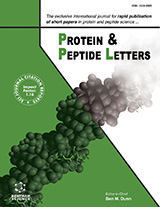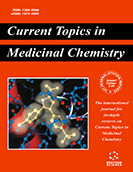Abstract
Hexavalent chromium [Cr(VI)] is a widespread environmental pollutant, arising as a by-product of numerous industrial processes. Bacteria can reduce toxic and carcinogenic Cr(VI) to insoluble and less toxic Cr(III), offering promise for an environmental friendly and affordable solution to chromate pollution. ChrR, a class I chromate-reducing flavoenzyme from Pseudomonas putida is an efficient chromate reducer. The crystal structure of ChrR is yet unknown to the scientific community, hence a three-dimensional (3D) structure is very essential for structural studies, protein – ligand interaction simulations and designing novel bioremediation strategies. The 3D model of the P. putida ChrR protein was predicted using in silico approach. Due to low percentage of sequence identity for homology modeling, I-TASSER was used for structure prediction which combines the methods of threading, ab initio modeling and structural refinement. The stereo chemical quality of the best model was validated with 90.6% residues under favored region from Ramachandran plot. The modeled protein was submitted to Protein Model Database and can be downloaded with the ID PM0077375. The degree of conservation was mapped onto the predicted model and ligand binding sites were found. The results of conservation analysis and binding site prediction were combined to show several highly conserved binding sites. Altogether, the structure for ChrR has been predicted. The work reveals novel universally conserved residues. These residues could be candidates for binding interactions and provide the basis for designing advanced chromium bioremediation strategies.
Keywords: Binding sites, chromium reductase, conservation analysis, protein modeling, Pseudomonas putida, structural bioinformatics.
Protein & Peptide Letters
Title:In silico Protein Structure Modeling and Conservation Analysis of ChrR, a Class-I Chromate Reducing Flavoenzyme from Pseudomonas putida
Volume: 20 Issue: 9
Author(s): Shivani H Viradia and Anjana K Vala
Affiliation:
Keywords: Binding sites, chromium reductase, conservation analysis, protein modeling, Pseudomonas putida, structural bioinformatics.
Abstract: Hexavalent chromium [Cr(VI)] is a widespread environmental pollutant, arising as a by-product of numerous industrial processes. Bacteria can reduce toxic and carcinogenic Cr(VI) to insoluble and less toxic Cr(III), offering promise for an environmental friendly and affordable solution to chromate pollution. ChrR, a class I chromate-reducing flavoenzyme from Pseudomonas putida is an efficient chromate reducer. The crystal structure of ChrR is yet unknown to the scientific community, hence a three-dimensional (3D) structure is very essential for structural studies, protein – ligand interaction simulations and designing novel bioremediation strategies. The 3D model of the P. putida ChrR protein was predicted using in silico approach. Due to low percentage of sequence identity for homology modeling, I-TASSER was used for structure prediction which combines the methods of threading, ab initio modeling and structural refinement. The stereo chemical quality of the best model was validated with 90.6% residues under favored region from Ramachandran plot. The modeled protein was submitted to Protein Model Database and can be downloaded with the ID PM0077375. The degree of conservation was mapped onto the predicted model and ligand binding sites were found. The results of conservation analysis and binding site prediction were combined to show several highly conserved binding sites. Altogether, the structure for ChrR has been predicted. The work reveals novel universally conserved residues. These residues could be candidates for binding interactions and provide the basis for designing advanced chromium bioremediation strategies.
Export Options
About this article
Cite this article as:
Viradia H Shivani and Vala K Anjana, In silico Protein Structure Modeling and Conservation Analysis of ChrR, a Class-I Chromate Reducing Flavoenzyme from Pseudomonas putida, Protein & Peptide Letters 2013; 20 (9) . https://dx.doi.org/10.2174/0929866511320090011
| DOI https://dx.doi.org/10.2174/0929866511320090011 |
Print ISSN 0929-8665 |
| Publisher Name Bentham Science Publisher |
Online ISSN 1875-5305 |
 14
14
- Author Guidelines
- Bentham Author Support Services (BASS)
- Graphical Abstracts
- Fabricating and Stating False Information
- Research Misconduct
- Post Publication Discussions and Corrections
- Publishing Ethics and Rectitude
- Increase Visibility of Your Article
- Archiving Policies
- Peer Review Workflow
- Order Your Article Before Print
- Promote Your Article
- Manuscript Transfer Facility
- Editorial Policies
- Allegations from Whistleblowers

















.jpeg)








